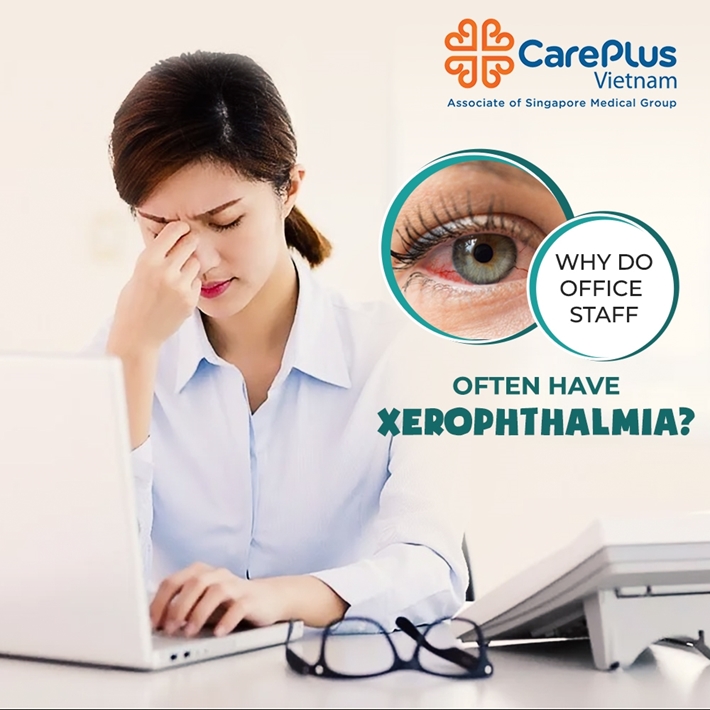Why do office workers often have dry eye syndrome?
Did you know: Our eyes blink 60% less when concentrating at work, looking at computers a lot, air-conditioned environments are dry or wearing contact lenses are common causes of dry eyes. Ophthalmologists often joke that this is an "occupational disease" of office workers due to continuous high-intensity computer use.

6/6/2022 9:49:29 AM
1. Dry eye syndrome – A common syndrome in the workplace
According to research, about 60% of office workers suffer from eye diseases, mainly dry eyes. The reason is that 70% of working time is attached to the computer. Highly concentrated for long periods of time, people who often work on computers experience a decrease in blinking frequency (normal frequency 12-14 times per minute). This causes the tear film to destabilize or be destroyed, causing dry eye.
Sitting in an air-conditioned room often also causes dry eyes, because the air conditioner has a dehumidifier that makes the air in the cold room very dry, tears evaporate faster. These two factors combine to increase dry eye symptoms and eye pain.
2. Prevention of dry eye symptoms for office workers
To prevent dry eye disease, people who work a lot on the computer should drink lots of water, avoid sitting right in the wind blowing out of the air conditioner and fan, close their eyes for a few seconds about every 30 minutes to wash their tears evenly. through the cornea. When you see signs of eye pain, fatigue, dryness, burning, the patient should go to the doctor soon.
2.1. Notes in daily life
- Do not look too long at the computer screen.
– Turn off the phone when resting.
- Avoid wearing contact lenses.
- Create humidity in the office.
Eye drops may temporarily relieve dry eyes. But if you use the drops 4 times a day and your eye discomfort still doesn't go away, you should see your doctor.
2.2. Food against dry eyes
Add foods that are good for your eyes such as:
Vitamin A: found in the liver of chicken, duck, pig, fish, eggs, duck eggs, carp, milk...
- Types containing -carotene: yellow or red fruits and tubers: Gac, carrots, papaya, pumpkin, tomato... It is also found in dark green vegetables such as spinach, amaranth, etc. broccoli, broccoli, spinach, water spinach.
Vitamin C: fully supplemented with vitamin C from fruit foods such as: oranges, lemons, tangerines, grapefruit, strawberries, guava, grapes, pineapple, soursop, mangosteen. It is also found in vegetables such as spinach, white cabbage, peppers, onions, and tomatoes.
- Vitamin E: including soybean, sunflower, sesame, peanut, bean sprouts (mung bean sprouts). It is found in nuts, asparagus, milk, animal liver and especially fish fat.
Foods rich in lutein: include corn, spinach, kale, eggs of all kinds.
Foods rich in selenium: include seafood such as fish, shrimp, crab, clams, oysters, snails, mussels. It is also found in small amounts in eggs, sunflower oil, and sesame oil.
In addition to a regular lifestyle and diet, you should take the initiative to have regular eye exams to be consulted by a doctor for effective diagnosis and treatment of eye diseases.